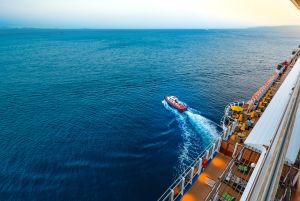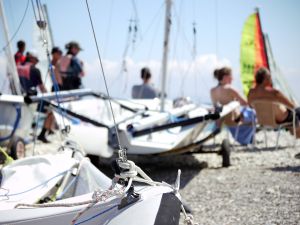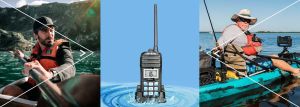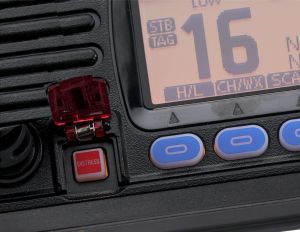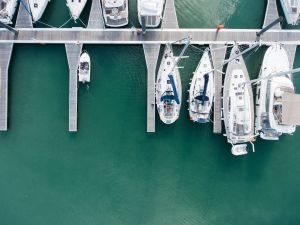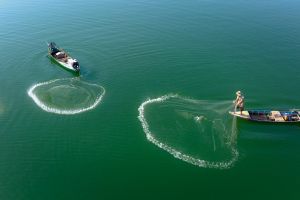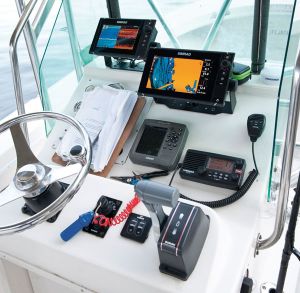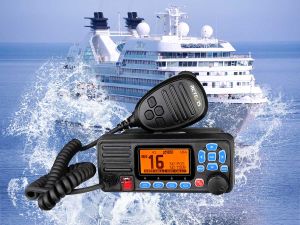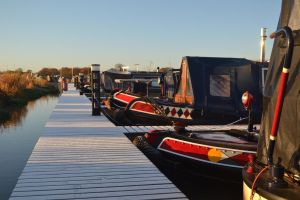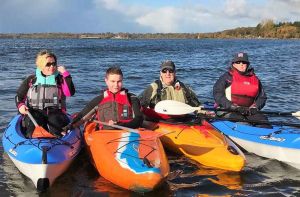Author
Overview of GMDSS Sea Areas and Radio Safety Equipment Requirements
- Jul 26,2022
- Leeric
- 0 Comments
- None
Large commercial vessels cover thousands of nautical miles, travelling through international waters whilst at sea for months at a time either delivering cargo or providing important services. If the worst was to happen and a ship needed rescue and support, they must use an internationally accepted safety system that can alert nearby sea search and rescue teams of their situation anywhere in the world. This is called Global Maritime Distress and Safety System (GMDSS). ...
VHF marine radio antenna
- Jul 26,2022
- Leeric
- 0 Comments
- None
After you decide which VHF radio is best for you, your next step is to pick out an antenna. The VHF antenna is a very important part of your VHF Radio System. VHF antennae come in many lengths and types, so, before buying a VHF antenna contact an expert and determine which style best fits your needs. If you buy the wrong antenna you will not get the performance your VHF radio is capable of producing. VHF and DSC equipment are made up of three distinct parts - each part is equally important. ...
VHF radio for sea Kayakers
- Jun 06,2022
- Leeric
- 0 Comments
- None
As paddlers, it's very important for us to be able to communicate with one another when we're out in water, but it's also important for us to get to communicate with other vessels and even the Coast Guard, the authorities if there's ever a case of an emergency. ...
DSC Q&A
- Jun 06,2022
- Leeric
- 0 Comments
- None
The simple answer: If your radio has a button that is covered by a bright red, see-through plastic cover, then it has DSC (Digital Select Calling) capability. Note that DSC does not work “out of the box”. It requires the owner/installer to follow some simple steps for it to be enabled. Refer to: ‘After you buy a Class D VHF radio’ of these instructions for details. Please note that not all fixed-mount DSC VHF radios are Class D compliant, and must be in order to be installed in any vessel. ...
VHF radio with DSC and Class D information
- Jun 06,2022
- Leeric
- 0 Comments
- None
Class D equipment is specifically designed for recreational vessels. It provides VHF DSC distress, urgency and safety as well as routine calling and position polling. Class D equipment includes a dedicated channel 70 DSC receiver, so you will never miss a DSC call. ...
Class A AIS VS. Class B AIS
- Jun 06,2022
- Leeric
- 0 Comments
- None
Class A AIS transponders (SOLAS Compliant) operate using Self-Organizing TDMA (SOTDMA) broadcast mode and transmit at a power level of 12.5 watts. Dynamic information is transmitted every 2 to 10 seconds while underway and every 3 minutes while at anchor. Static and voyage related information, such as the vessel’s name and cargo, are transmitted every 6 minutes. Class A AIS transponders are required to have a DSC (156.525 MHz) receiver, external GPS, heading ...
How to use a VHF radio correctly is an essential boating skill
- May 17,2022
- Leeric
- 0 Comments
- None
You don’t want to be fumbling about trying to remember the training when you really need it. You, as skipper, should have a good understanding of how it works, how to adjust it and how to send an emergency message. Ideally, at least one other person aboard should also have a working knowledge of the basics. ...
UK VHF marine radio frequencies and usage
- May 17,2022
- Leeric
- 0 Comments
- Maritime knowledge
In the United Kingdom there are approximately 57 VHF channels available plus the private channels M and M2 for use by marinas and yacht clubs and the private channel 00 which is for HMCG use only. 2 additional channels are dedicated to the Automatic Identification System services. The U. K. uses the "International Frequency" plan. ...
The growing importance of using marine radio on Inland waterways
- May 14,2022
- Leeric
- 0 Comments
- None
The inland waterways are becoming busier with increased commercial traffic and new pleasure craft Many new boaters may not be fully familiar with the waterway or with traditional means of communication such as sound signals or flags. Both these factors have produced a situation where marine VHF radio on pleasure craft is becoming an essential piece of equipment leading to an improvement in safety ...
The importance of VHF marine radio when kayaking
- May 14,2022
- Leeric
- 0 Comments
- None
The exciting sport/hobby of Sea Kayaking has become very popular over recent years. Canoeists and kayakers are venturing further and further out to sea. If you are thinking about doing this, then as part of your planning for a great adventure, a marine VHF handheld radio is an essential safety consideration that could save your life. ...

